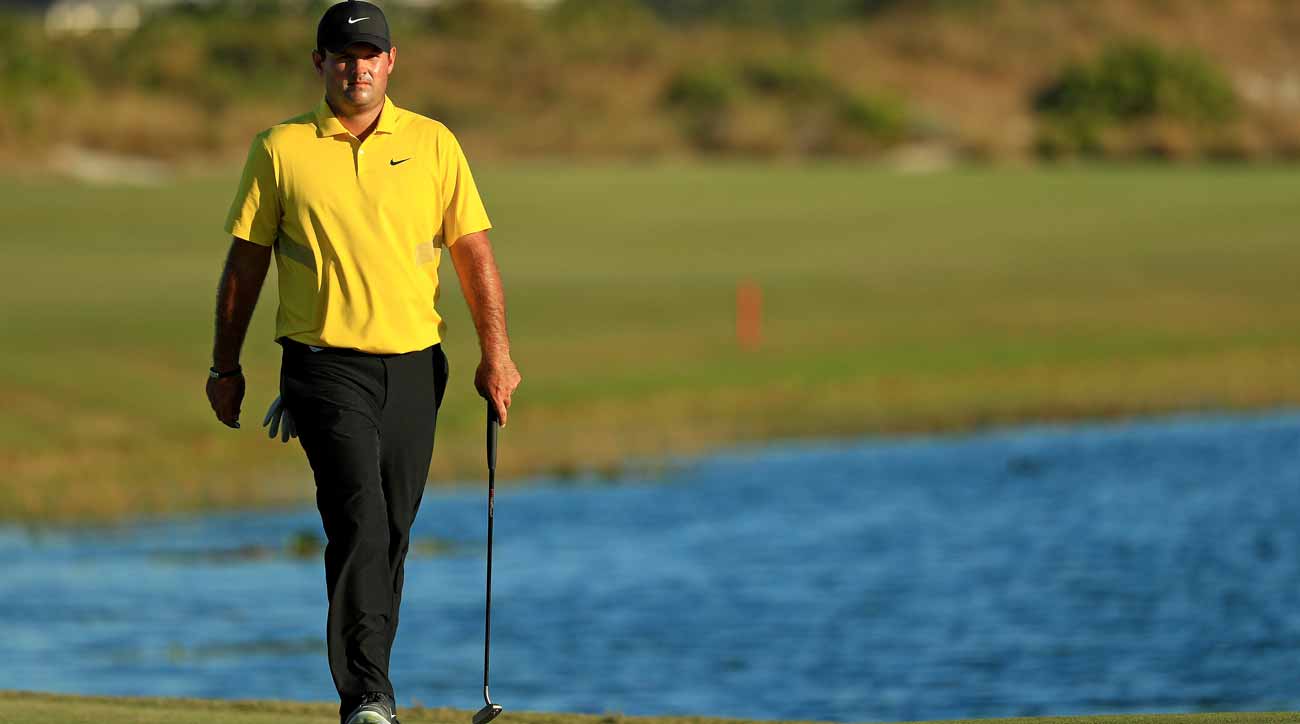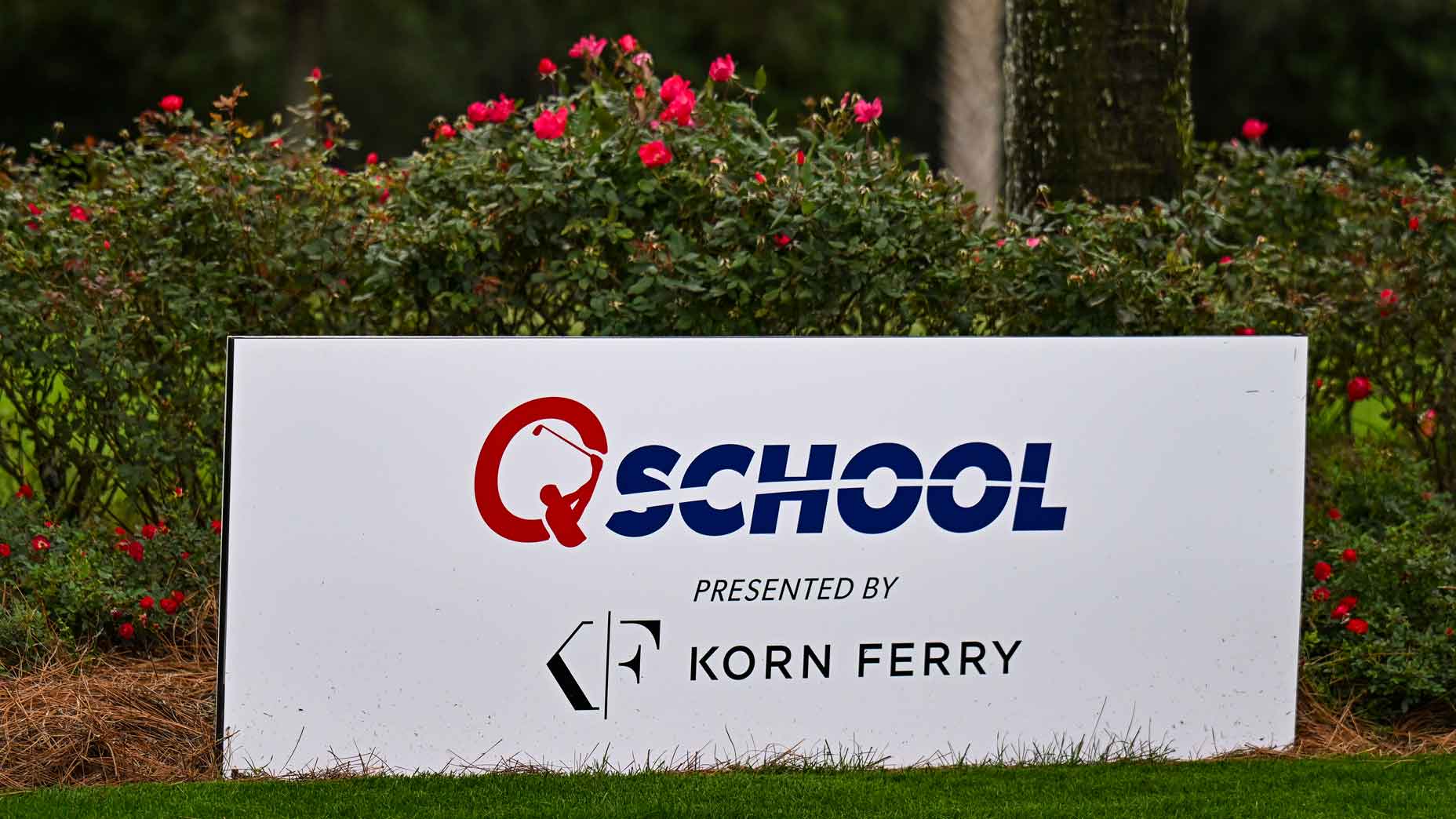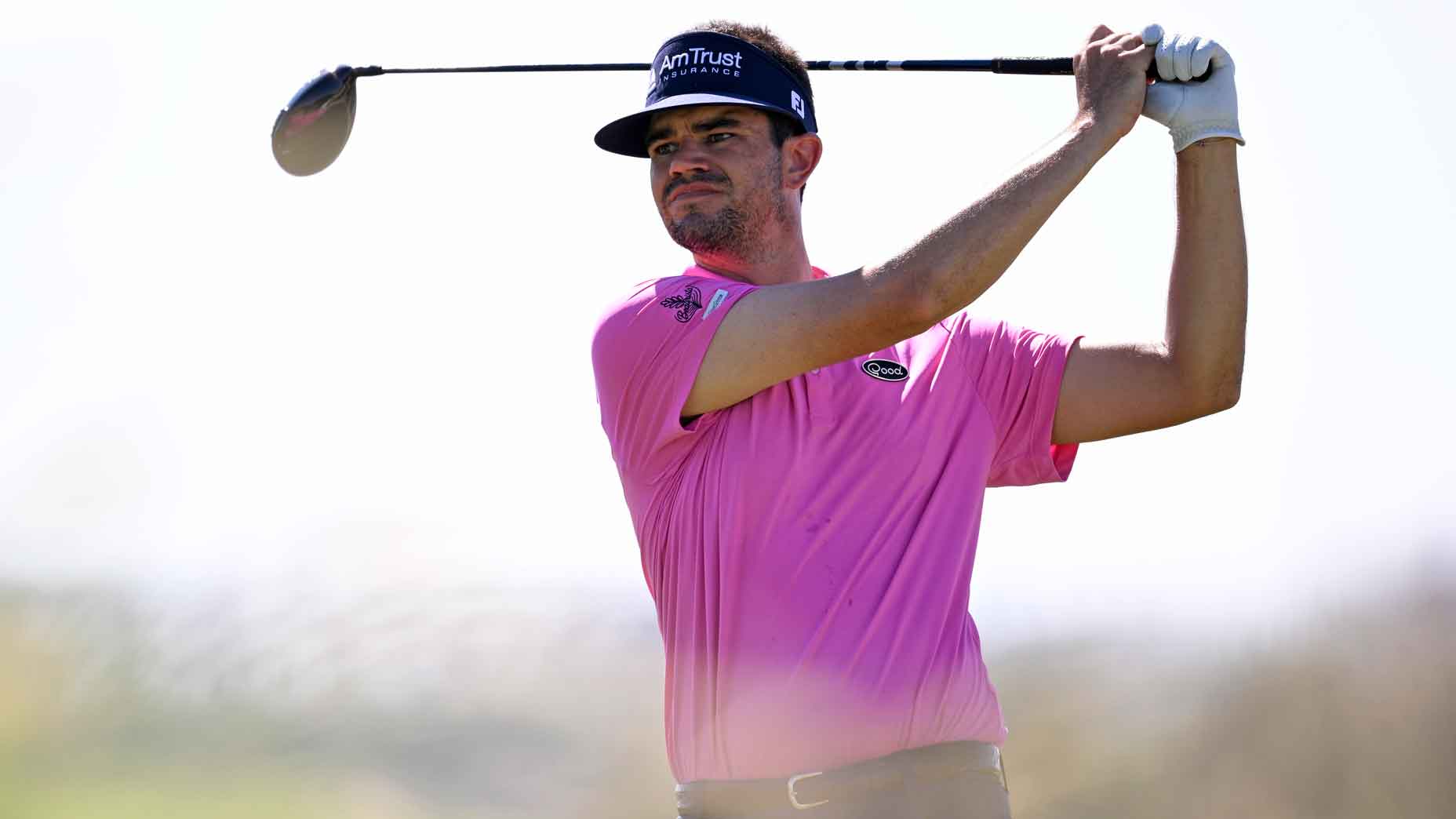 A cult hero has a chance to reclaim his PGA Tour card
A cult hero has a chance to reclaim his PGA Tour card
The inside story behind Patrick Reed’s controversial waste-area penalty

NEW PROVIDENCE, Bahamas — After Rickie Fowler signed for his third-round score at Friday’s Hero World Challenge, he walked out into the media tent to answer a few questions. In the background, a monitor was playing, in slow-motion, Patrick Reed’s practice swings on No. 11, trying to determine whether he had violated a rule while taking his practice swing in a waste area.
“Whoa,” Fowler said, clearly taken by the footage. “What is that?” Several reporters, dialed in to the news of the moment, explained that Reed’s ruling — whether or not he had improved his line of play — was under review. Fowler shrugged. “I mean, I don’t even know what you have to review,” he said.
Fowler’s view was echoed by tens of thousands of viewers across the world; Reed’s case looked like a cut-and-dry example of skirting the rules, clearing a slightly better path and gaining a small advantage over the field. A violation of the Rules of Golf is always news; that’s true because of the game’s call-your-own-fouls nature. But with Reed, things are slightly different. Fair or not, the golf public (particularly on the internet) are liable to dunk on any Reed misstep, warranted or not. So let’s review what we concretely know about this situation, which quickly turned to golf’s Code Red.
WHAT WE SAW
No. 11 at Albany is a par-5 that was reachable downwind the first two days of the event. When the win switched for Friday’s round, strategy switched with it, and golfers had to radically change lines to aim further left on the fairway. Reed was among those who ended up missing left of the fairway off the tee; he found himself in the waste area down the left side. Even without any human traffic, these can be treacherous places with inconvenient lies. But Reed had entered the day with a three-shot lead and was playing from the final pairing, which meant a day’s worth of extra imperfections in the wasteland bordering the fairway.
It was no surprise, then, that Reed drew a poor lie in an indentation in the sand. What was surprising was what happened next: Reed took two practice swings that would face significant scrutiny over the coming hours. On the first practice swing, he placed his club on the sand behind his ball, took it club low and away, and scraped a quantity of sand from behind his ball. His second practice swing was slightly more square to the target, and as he pulled the club away he scraped an additional bit of sand out of the way. It looked pretty cut-and-dry: there had been sand in the way, and Reed cleared a path.
— GOLF.com (@GOLF_com) December 6, 2019
He hacked it out — the lie was still far from perfect — then missed the green and went on to make bogey. He’d started the round with ten consecutive pars; suddenly he’d lost the last of his three-stroke lead.
WHAT WE HEARD
Reed played on, blissfully unaware that on the telecast, his actions were under review. At tournament headquarters, PGA Tour officials headed to the Golf Channel compound to closely review the footage. Slugger White decided that, because it wasn’t the event’s final day, he would wait until after the round to discuss a potential penalty with Reed.
Covering the event for Golf Channel, Paul Azinger said it most succinctly: “If that’s not improving your lie, I don’t know what is. He knows better. I don’t know why that happened or what he was thinking.”
ADVERTISEMENT
WHAT REED SAID
Reed followed his bogey at 11 with another bogey at 12, then found his footing with birdies at 14, 15 and 18 to get back to what he thought was a round of even-par 72. Playing partner Gary Woodland rolled in a 40-footer on the 17th hole and stuck his approach at 18 inside two feet; he posted 13-under to take an apparent one-stroke lead over Reed and Henrik Stenson heading to the final day. Reed would be paired with Tiger Woods in the final round as the two tried to chase down the leaders.
But then he stepped into the scoring area and stayed there for a number of minutes. Woodland emerged and headed to Golf Channel’s stand-up area to give post-round comments. Reed started to walk out of the scoring area but then was called back in by Slugger White. After another minute, he emerged. A PGA Tour staffer spoke to Reed, who said he would be declining to give an interview on Golf Channel or give official remarks to reporters at the podium. But as a group of reporters looked on, Reed motioned them over and said he was happy to discuss what had happened.
Golf Channel’s cameras moved in, too, but hardly got the shot they wanted: Reed was still dripping sweat from a sweltering day in the Bahamas sun and he was severely backlit. The look did Reed no favors with viewers at home. In person, he was composed and had a clear story for his version of what had happened. He had been in an elongated depression, maybe a footprint, and the sand he’d cleared hadn’t actually been in his path. A different camera angle, he said, would have shown something different.
Reed’s answers treaded the middle ground of taking responsibility (“After seeing the video, it’s a two-stroke penalty, I accept that,” he said) and denying any wrongdoing (“I think with a different camera angle they would have realized that … it was not improving the lie because it was far enough away from the golf ball,” he added). If he truly had not improved his lie or intended line of play, it would be no penalty, but he’d accepted the penalty anyway, without objection. Reed was particularly clear on one thing: He did not intend to skirt the rules.
“After seeing the video, I accept that, but it wasn’t because of any intent,” he said. “I thought I was far enough away.”
THE RULE
Rule 8.1 concerns Player’s Actions That Improve Conditions Affecting the Stroke, and the specific violation concerned 8.1a (4), which reads as follows:
A player must not take any of these actions if they improve the conditions affecting the stroke:
4. Remove or press down sand or loose soil.
Slugger White met with Reed to discuss the penalty after his round, then emerged to speak with reporters.
“Patrick was assessed a two-stroke penalty for improving his intended line of play,” White said. He was complimentary of the way Reed had handled the penalty assessment post-round.
“He could not have been more of a gentleman,” White said. “He was unbelievable. He said — he had a different look at it. The angle that we had was behind and he’s looking from on top, so he may not have — I don’t know if he could have seen it as clearly as we did, but he could not have been a better gentleman.”
THE FALLOUT
After speaking to the press, Reed headed to the short-game area for some late-afternoon putting practice alongside Woods (in the background, Bryson DeChambeau neared hour three of his post-round range session). Several dozen spectators looked on, but most were on their way out for the day. The peaceful scene clashed with what was happening on social media, where Reed is considered among golf’s chief villains.
The video looked damning, but there’s no question that a different player with a different background would have received more benefit of the doubt in the public eye. Reed, though, rarely gets the benefit of the doubt: he has faced allegations of cheating as far back as college days at Georgia.
Reed has had a number of public disputes since coming on the PGA Tour, too: His criticism of Ryder Cup captain Jim Furyk. His complaint about comped seats at Fenway Park. His assertion that Jordan Spieth would have gotten a better drop. His showdown with a noisy camera crew. Reed is pleasant and jovial in day-to-day interactions, but these moments stick out in a sport where it’s easy to stick out.
One particularly relevant piece of old video that emerged was Reed taking a similar approach in a waste area in 2015 — at the same event. The video was grainy and from the same camera angle, but added support to either side of the story. If you believed Reed’s explanation, this showed that he wasn’t trying to get away with anything — this is just how he approaches waste area shots like this. If you didn’t believe Reed, however, this suggested a pattern of behavior.
This video from 2015 seems to show Reed making a similar waste bunker practice swing… pic.twitter.com/Z0slkUUfyl
— Dylan Dethier (@dylan_dethier) December 6, 2019
In the end, Reed took a two-stroke penalty for a triple-bogey 8 on No. 11. He slipped to solo 6th place at 10 under. That’s where he’ll begin Saturday’s final round, three shots back of Woodland’s lead, playing alongside Jon Rahm. He could still win the event — but no matter what happens Saturday, there’s no question he’d like to take back two very costly practice swings.
To receive GOLF’s all-new newsletters, subscribe for free here.
ADVERTISEMENT







